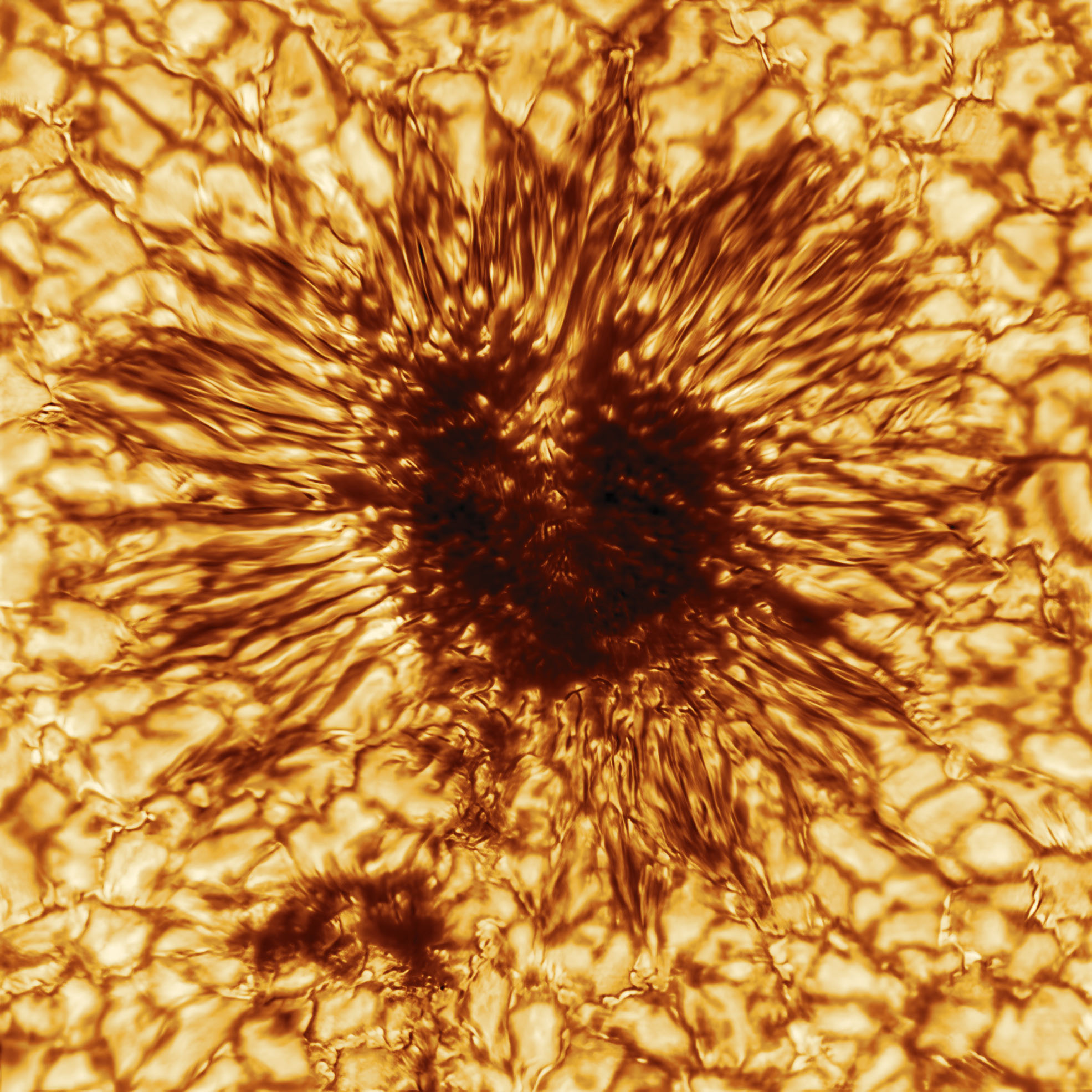The largest solar telescope on Earth snaps the most detailed image of a sunspot we've ever seen
Behold the view from the Daniel K. Inoye Solar Telescope.

Scientists just released the most striking and detailed image of a sunspot humans have ever seen.
The image, taken Jan. 28 by the Inouye Solar Telescope, shows magnetic structures as small as 20 kilometers on the surface of the sun, Thomas Rimmele, the associate director at NSF's National Solar Observatory (NSO) said in a National Science Foundation statement. The NSF built and operates the telescope that captured this picture, which was released Dec. 3. The solar telescope is the largest dedicated to observing the sun.
While the image of this sunspot measures only a small portion of the sun, at just 10,000 miles (16,100 kilometers) across it's large enough that the Earth could easily fit inside. Looking at the sunspot, you'll notice a dark center that looks like it feathers out into the brighter outside.
Related: World's largest solar telescope produces never-before-seen image of our star
The dark region shows a concentration of magnetic fields that block the heat within the sun from reaching the surface. Although this dark area is cooler than the brighter parts of this sunspot, it's still more than 7,500 degrees Fahrenheit (4,100 degrees Celsius).
The streaks extending out from the dark region indicate patches of hot and cool gas sculpted by a convergence of intense magnetic fields and hot gasses boiling up from below, according to the NSF.
The Inouye Solar Telescope captured this image of a sunspot before the facility was completed. The NSF says that this image is an indication of the amazing views of the sun to come, thanks to the telescope's advanced optics and 13-foot (4 m) primary mirror and the arrival of a new solar cycle with an uptick in activity.
Breaking space news, the latest updates on rocket launches, skywatching events and more!
"We can now point the world's most advanced solar telescope at the sun to capture and share incredibly detailed images and add to our scientific insights about the sun's activity," Matt Mountain, president of the Association of Universities for Research in Astronomy, which manages the Inouye Solar Telescope, said in the NSF's statement.
Construction of the Inouye Solar Telescope is slated to finish in 2021.
Follow Kasandra Brabaw on Twitter @KassieBrabaw. Follow us on Twitter @Spacedotcom and on Facebook.

Kasandra Brabaw is a freelance science writer who covers space, health, and psychology. She's been writing for Space.com since 2014, covering NASA events, sci-fi entertainment, and space news. In addition to Space.com, Kasandra has written for Prevention, Women's Health, SELF, and other health publications. She has also worked with academics to edit books written for popular audiences.
